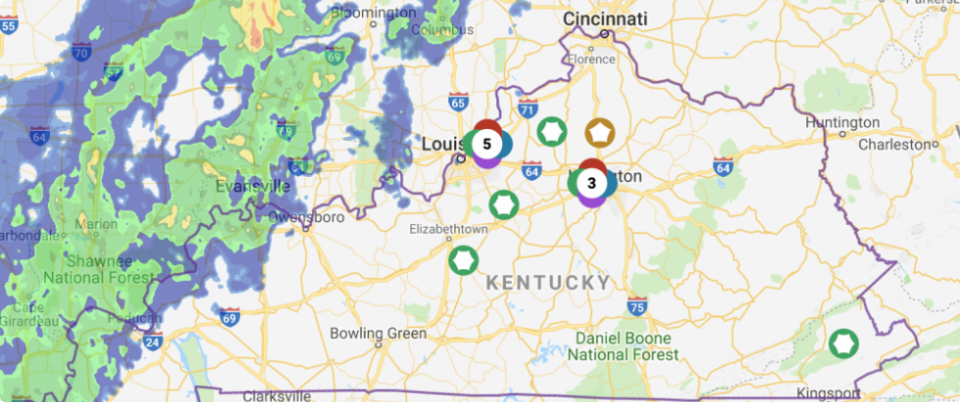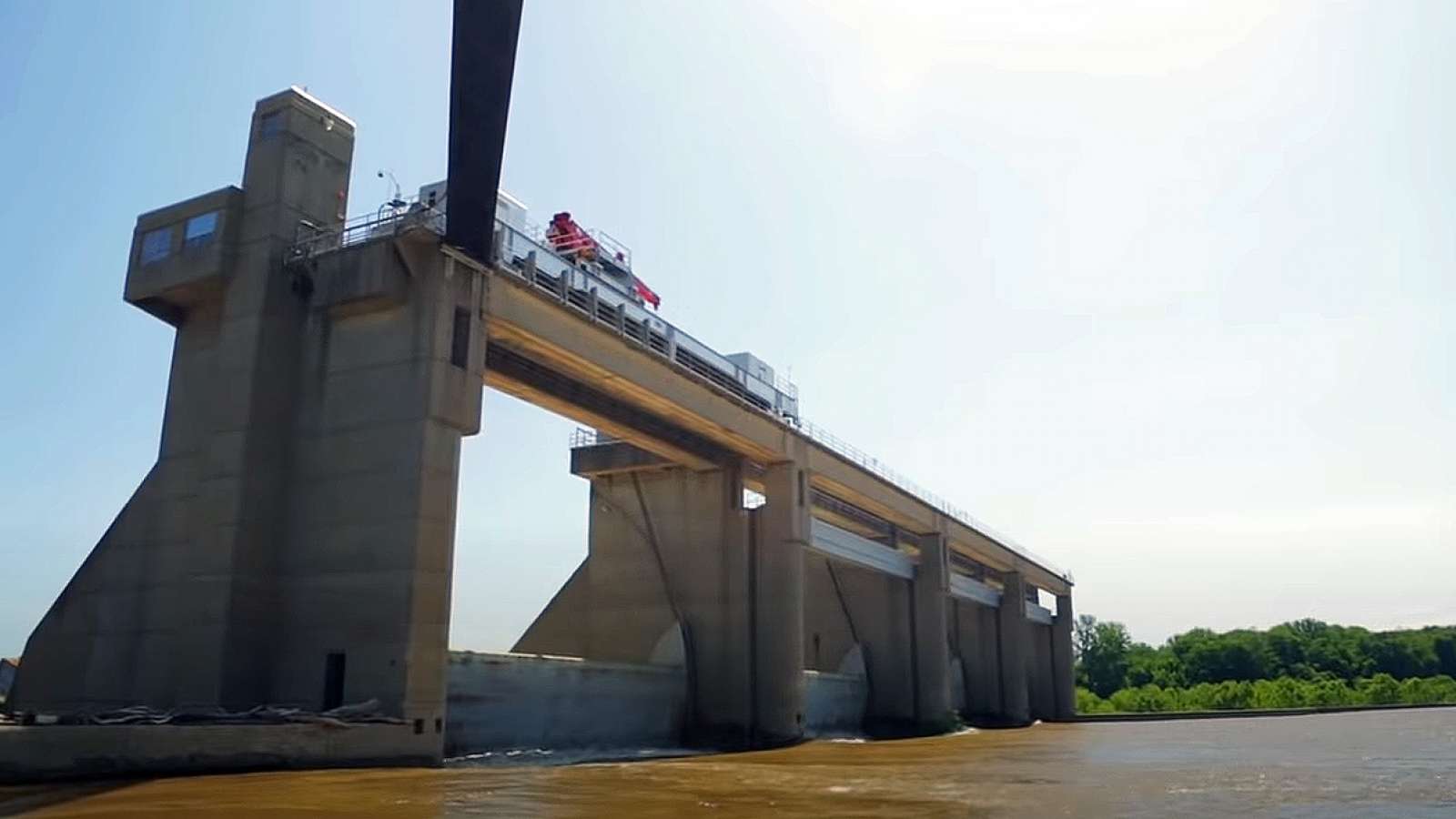Louisville’s location on the Ohio River allows the opportunity for LG&E to safely harness the natural energy of the river to create electricity. Ohio Falls Hydro Station was built in the mid 1920’s and was commissioned in 1927.
The station is uniquely located within the McAlpine Locks and Dam Navigational Project and the Falls of the Ohio Natural Wildlife Conservation Area. The Army Corps of Engineers operates the dam and spill gates at the Falls to help control and monitor the flow of the river for navigation.
Water first flows through a set of trash bars, which prevent large pieces of debris, such as trees, stumps and trash, from going through the units and causing damage. After passing through the trash bars, the water flows through the turbine, whose blades rotate a shaft connected to the generator, which also rotates with the turbine. When the generator rotates, electricity is produced. The water then flows out of the plant unaltered and continues down river.
During the plant’s first years of operation, the amount of electricity generated by the Ohio Falls Station provided most of the power needed to serve the city of Louisville. The relatively small capacity of the hydroelectric plant, however, quickly became insufficient to meet the needs of the growing city. More than 80 years later, this cost-effective, environmentally friendly source of power continues to operate.
Modernization effort to increase renewable energy output complete
January 2019 welcomed the completion of a modernization effort at the historic hydroelectric station. With the upgrades now in place, the facility is poised to enter a second century of generating clean, low-cost energy by harnessing the natural power of the Ohio River.
Upgrades to enhance equipment, software and safety measures began in 2005. The plant’s eight generating units were overhauled, with each taking more than a year to complete. Due to limited space and other concerns, only one unit was rebuilt at a time.
All of the inner workings of the generators were upgraded using the latest technology. For example, computer modeling gave the turbine blades a variety of pitches, angles and curves to maximize performance. Even with these modern changes, much of the facility’s hardware remains intact from the 1920s. The plant has retained its historic charm with original tile floors, wooden handrails, ornate light fixtures and a vintage control room.



